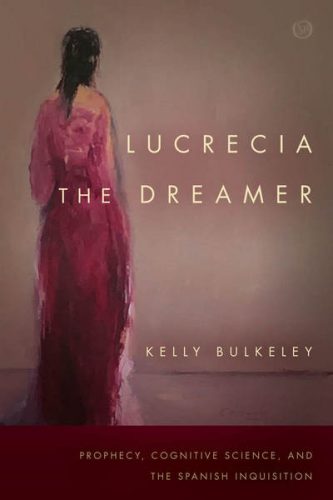 A new study suggests that people who are experienced meditators have dreams that differ in at least two interesting ways from non-meditators. The study was conducted by Elizaveta Solomonova, Tore Nielsen, and their colleagues at the Dream and Nightmare Laboratory at the Universite de Montreal. Their findings shed new light on the interactions between meditation and dreaming consciousness. The results appear in the latest issue of the journal Dreaming (volume 28, number 2, pp. 99-121).
A new study suggests that people who are experienced meditators have dreams that differ in at least two interesting ways from non-meditators. The study was conducted by Elizaveta Solomonova, Tore Nielsen, and their colleagues at the Dream and Nightmare Laboratory at the Universite de Montreal. Their findings shed new light on the interactions between meditation and dreaming consciousness. The results appear in the latest issue of the journal Dreaming (volume 28, number 2, pp. 99-121).
Twenty-two people (11 male, 11 female) with training in Vipassana meditation were given a procedural learning task, and then slept for a daytime nap in the laboratory. Their dreams at sleep onset and upon awakening were gathered, and they were given a follow-up test on the procedural learning task. The same protocol was used with a control group of twenty people (10 male, 10 female) who were not active meditators.
The researchers found many more similarities than differences between the dreams of the two groups. Both meditators and controls were basically the same on measures of dream content, and their performances on the procedural learning task did not vary significantly. This in itself is an interesting finding, insofar as it testifies to the steadiness and consistency of basic patterns in dream content across variations in personal circumstance. It takes a lot to alter the fundamental rhythms of human dreaming.
The researchers found two main differences between the two groups. The meditators had longer dreams, and more instances of friendly interactions with other characters.
The lengthening of the dream reports makes sense as a reflection of the meditators’ greater experience and skill at introspection, which would make it easier and more natural for them to describe their dreams in detail. It might also correlate with longer dream experiences (i.e. not just longer descriptions of ordinary-length dreams), but that’s hard to determine based on this evidence.
The higher frequency of friendly interactions in the meditators’ dreams also makes sense as a reflection of the main tenets of the Vipassana tradition, emphasizing compassion towards others.
Perhaps the most interesting negative finding was the lack of higher degrees of lucid dreaming among the meditators. Many studies by Tracey Kahan, Jayne Gackenbach, Stephen LaBerge and others have made connections between meditation and lucid dreaming, so the lack of a correlation in this study was a surprise. And yet the researchers offer a plausible explanation, based again on the characteristic features of the Vipassana tradition:
“It may be that Vipassana meditation does not increase the frequency of lucidity qualities during dreaming because of its particular emphasis on bodily experience. Rather, lucid dreaming might be more prevalent among practitioners of dream yoga or Shamatha meditation because these are more directly focused on the cultivation of metacognitive skills, such as the observing of thoughts, images, and other explicit mental contents. In other words, Vipassana meditation may be less likely than other forms of meditation to induce lucid dreaming because of its greater dependence on bodily self-reflection and lesser dependence on cognitive self-reflection.” (113)
This is a very important and helpful distinction to make, whether or not it’s the best explanation for the results of this study. It’s always good to think about the influence of cultural variations. There isn’t just one kind of meditation; there are many different traditions and lineages. Once we acknowledge this, it becomes less surprising perhaps that a form of meditation emphasizing metacognition will lead to more lucid dreams, while a form of meditation emphasizing embodiment and compassion will lead to more dreams of friendliness with others.
Note: this was first posted in Psychology Today, July 11, 2018.

 The satisfying nightmares of Paula Hawkins’ novel “Into the Water.”
The satisfying nightmares of Paula Hawkins’ novel “Into the Water.” Several hundred people from all over the world gathered in Scottsdale, Arizona this week to discuss the latest findings and methods in dream research. The 35th annual conference of the
Several hundred people from all over the world gathered in Scottsdale, Arizona this week to discuss the latest findings and methods in dream research. The 35th annual conference of the 
 The world’s biggest yearly gathering of dream researchers, teachers, artists, and therapists is less than two weeks away.
The world’s biggest yearly gathering of dream researchers, teachers, artists, and therapists is less than two weeks away. New research highlights 13 areas of continuity between waking and dreaming.
New research highlights 13 areas of continuity between waking and dreaming.